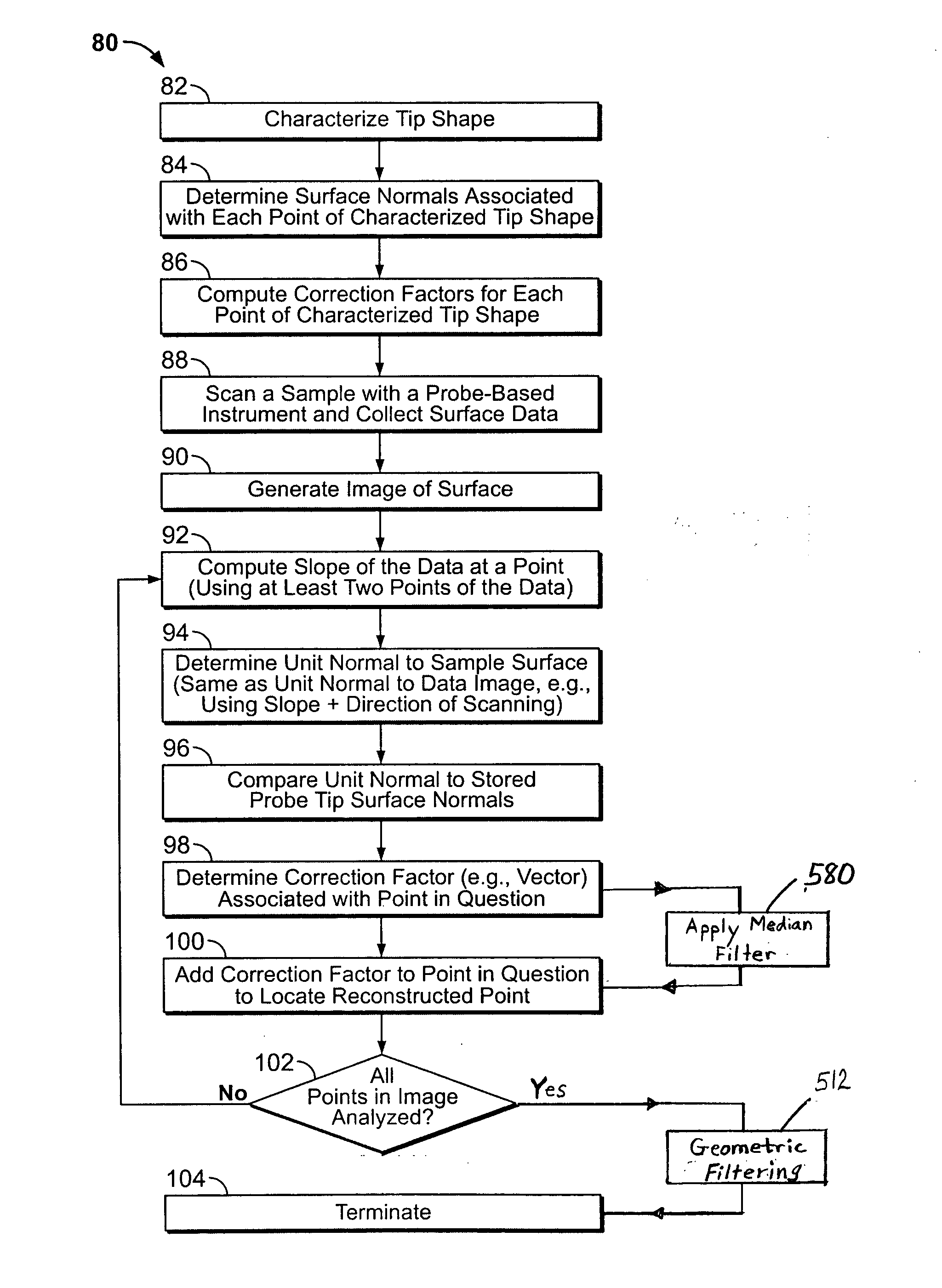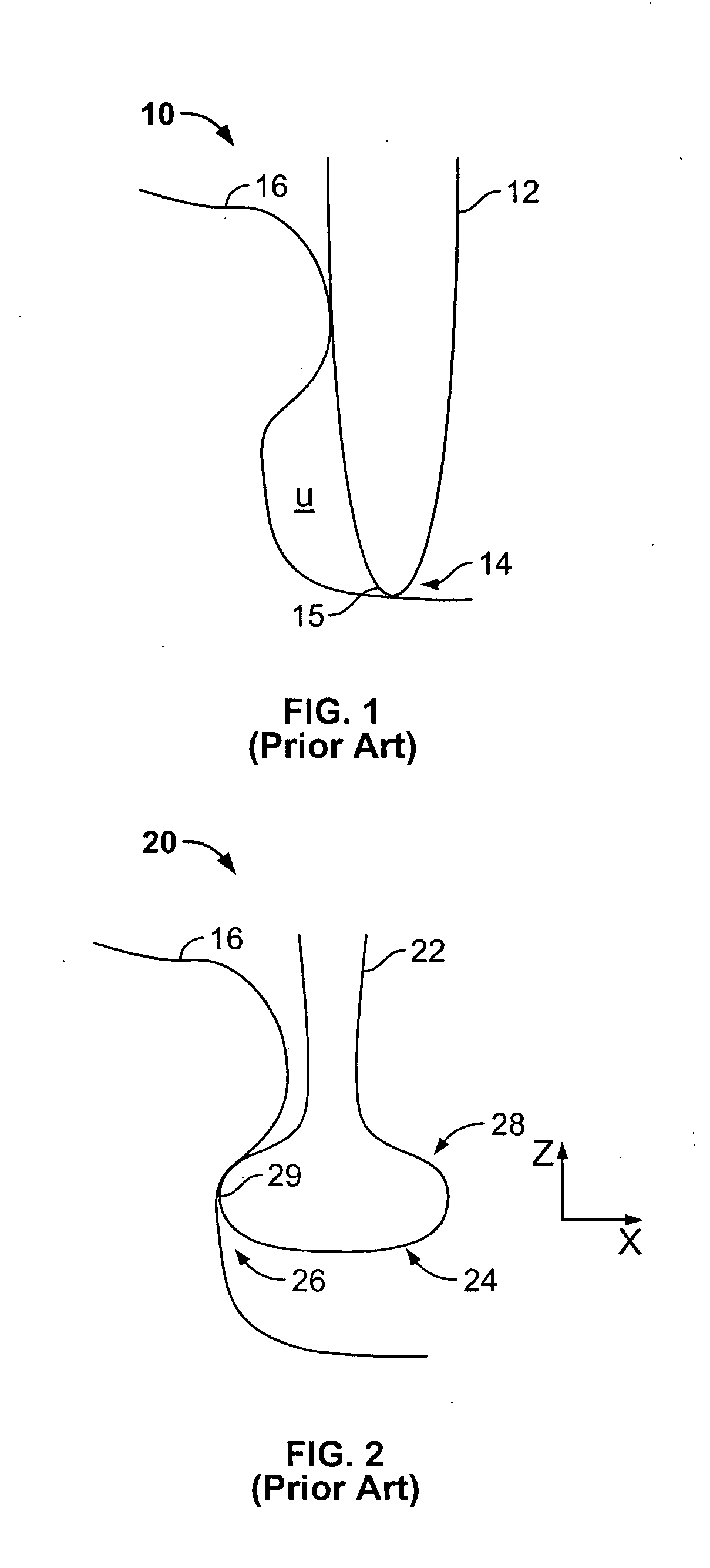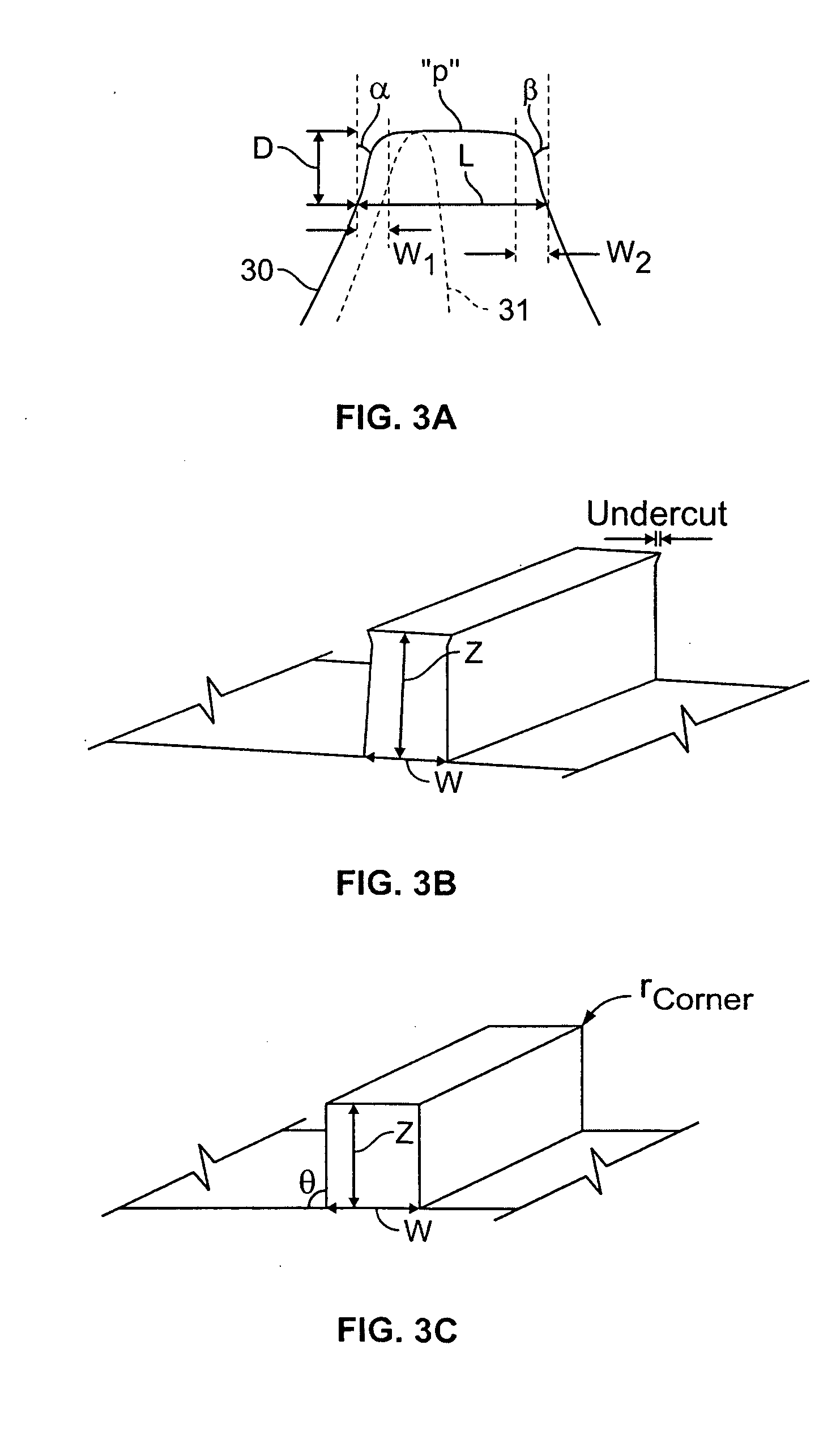Image reconstruction method
a reconstruction method and image technology, applied in the field of scanning probe microscopes, can solve the problems of inability to accurately reconstruct the surface image, inability to accurately analyze the data obtained by such probe-based instruments, and inability to accurately adjust the corresponding image accuracy, so as to improve the repeatability and accuracy of the reconstructed image surface, improve the visual rendering of the reconstructed surface, and improve the accuracy of the reconstructed image. the effect of accuracy
- Summary
- Abstract
- Description
- Claims
- Application Information
AI Technical Summary
Benefits of technology
Problems solved by technology
Method used
Image
Examples
Embodiment Construction
The preferred embodiments are directed toward improved methods of correcting reconstructed image data obtained with a scanning probe microscope by accurately accounting for probe tip shape in reconstructing the image of the sample surface. More particularly, the preferred method determines the actual point of contact of the probe tip on the sample surface for several points in a dilated image profile, corrects inconsistent image data with the tip shape used to capture the image data that improves the visual rendering of the reconstructed surface and improves both repeatability and accuracy of the reconstructed image surface. The present embodiment also provides alternate methods of image reconstruction.
Image Correction Using Point of Tip Contact Determination
Turning initially to FIG. 4A-4C, a sample 50 to be scanned by an AFM, as well as the resulting “raw” or dilated image data 54, are shown schematically together with the desired corrected image data 56. In particular, sample ...
PUM
 Login to View More
Login to View More Abstract
Description
Claims
Application Information
 Login to View More
Login to View More - R&D
- Intellectual Property
- Life Sciences
- Materials
- Tech Scout
- Unparalleled Data Quality
- Higher Quality Content
- 60% Fewer Hallucinations
Browse by: Latest US Patents, China's latest patents, Technical Efficacy Thesaurus, Application Domain, Technology Topic, Popular Technical Reports.
© 2025 PatSnap. All rights reserved.Legal|Privacy policy|Modern Slavery Act Transparency Statement|Sitemap|About US| Contact US: help@patsnap.com



